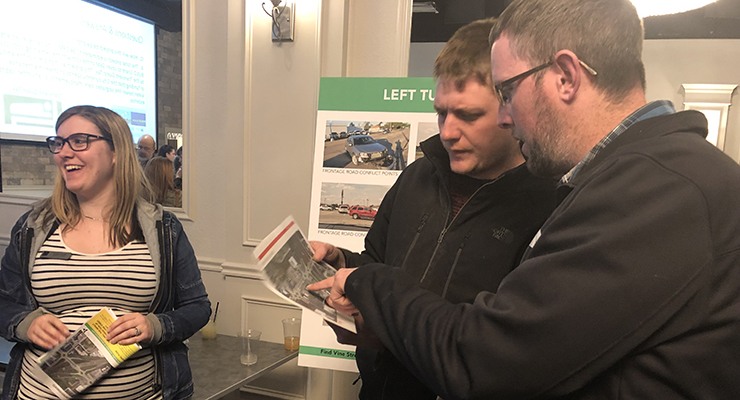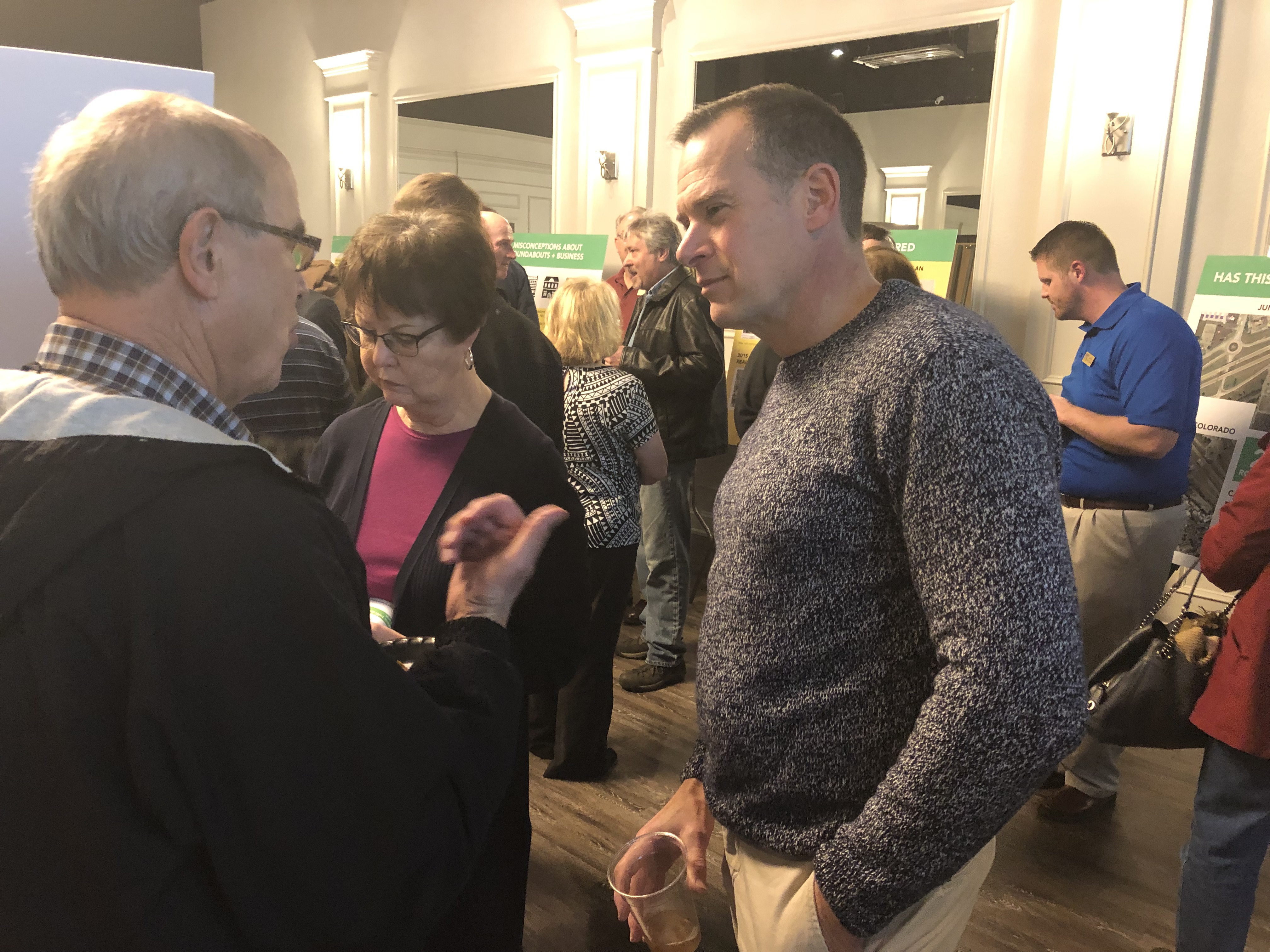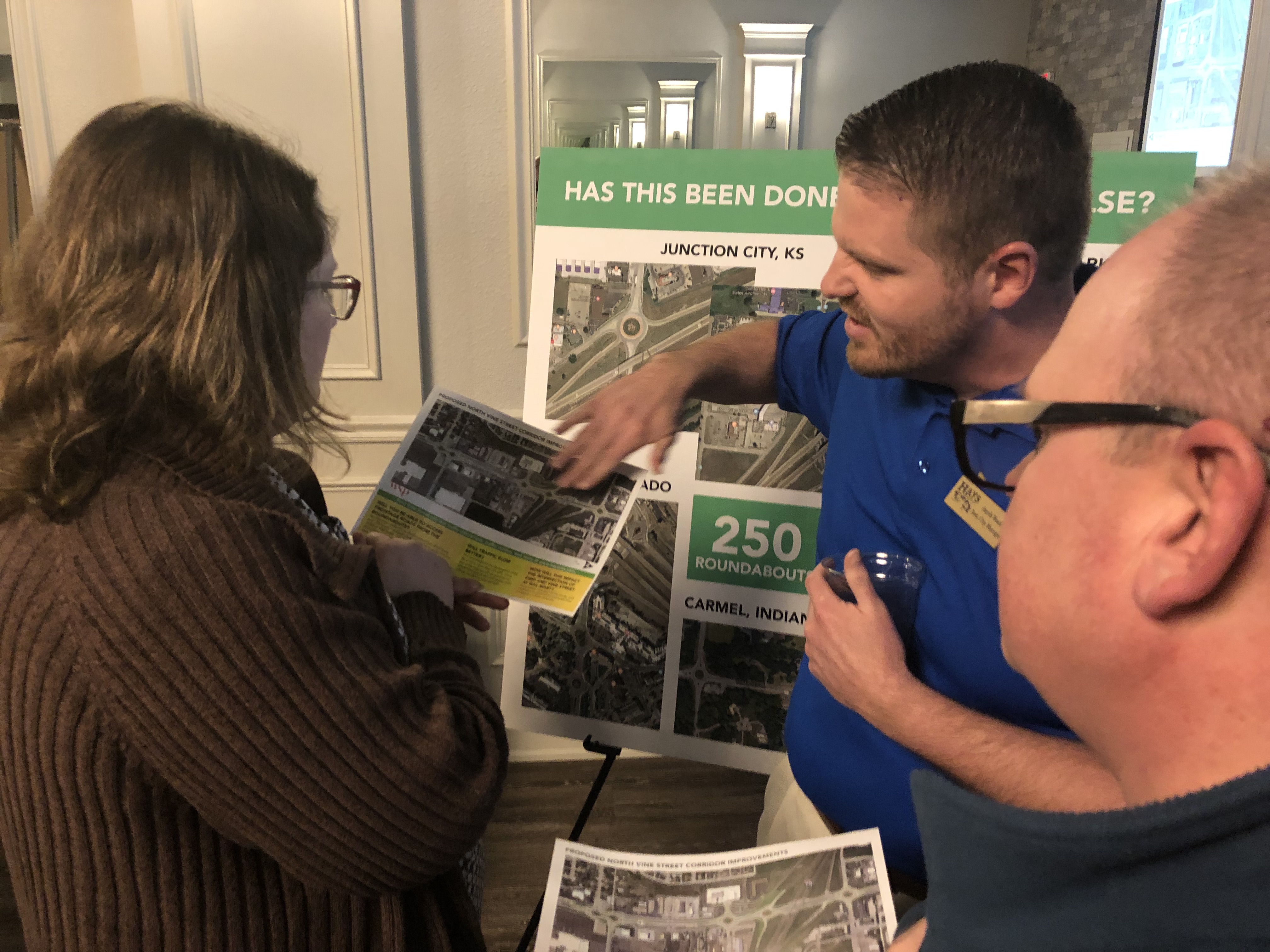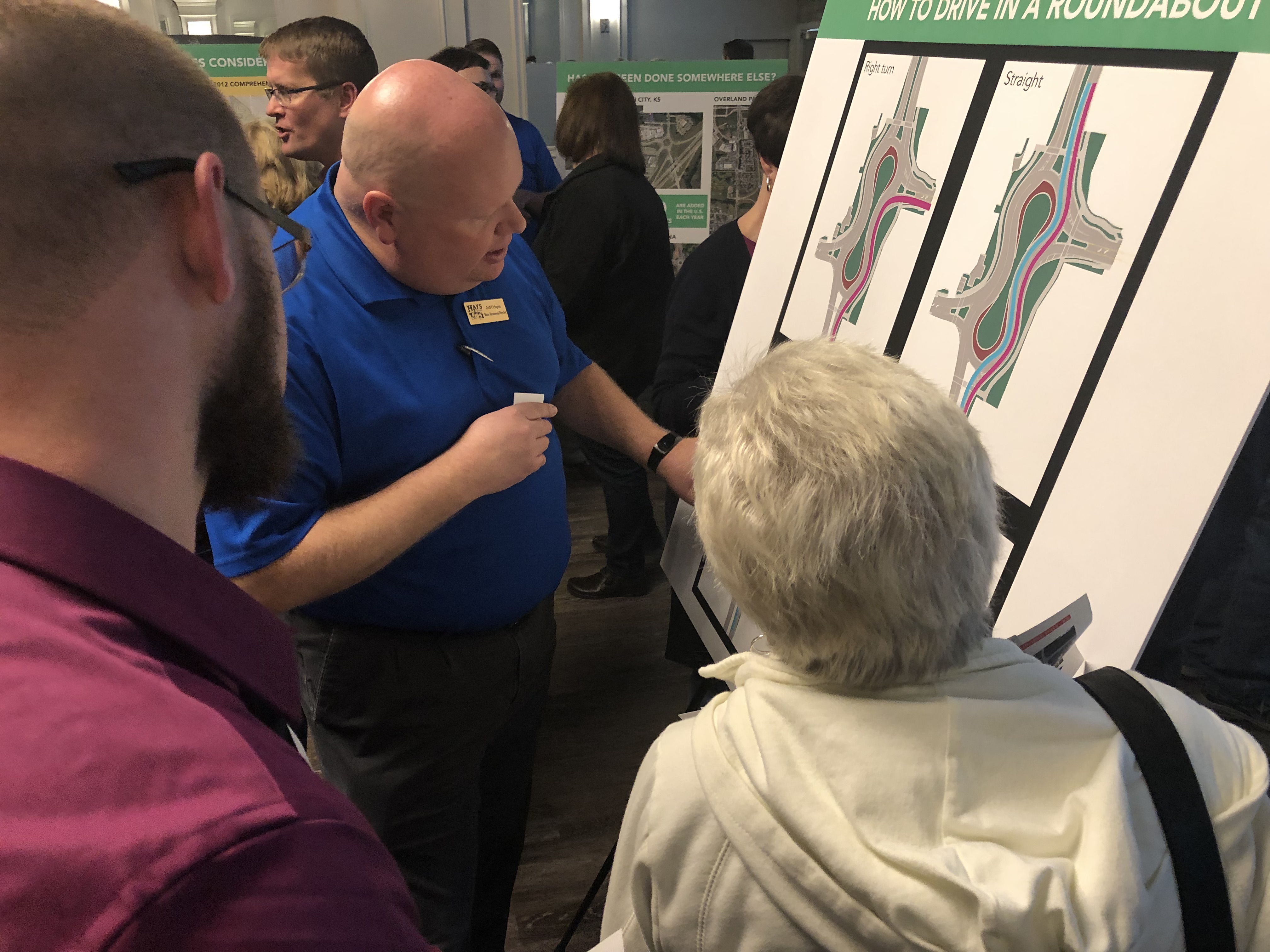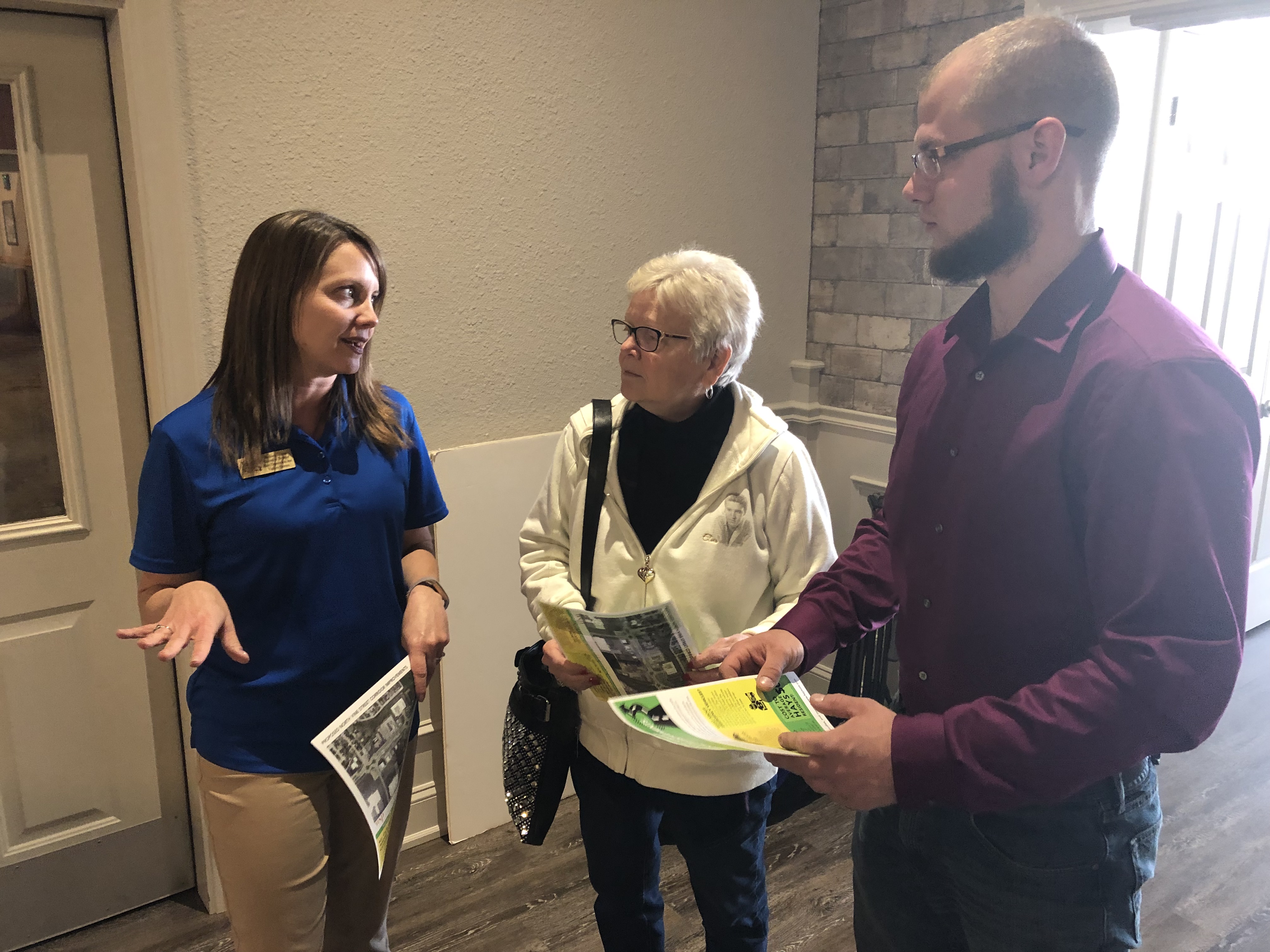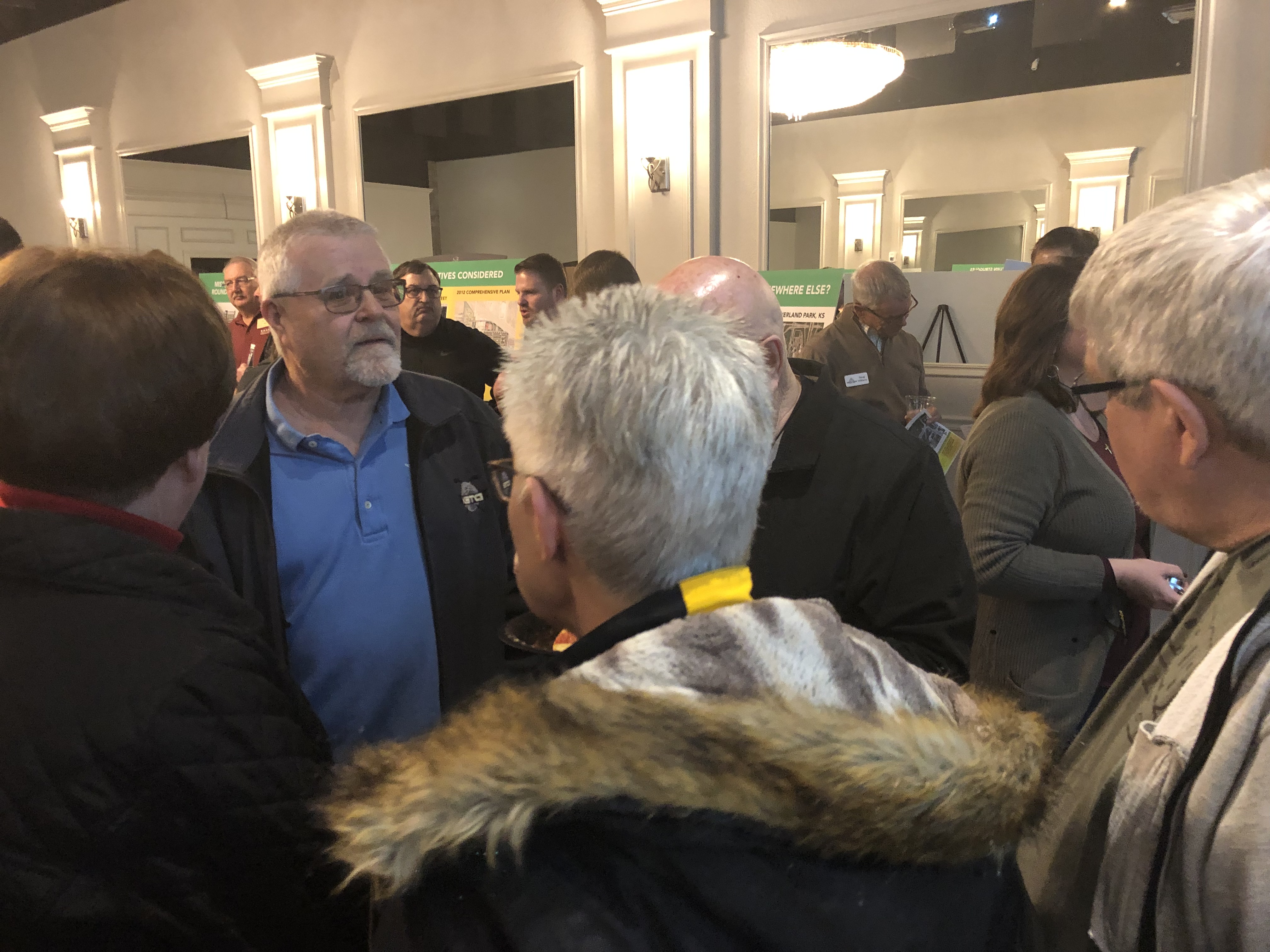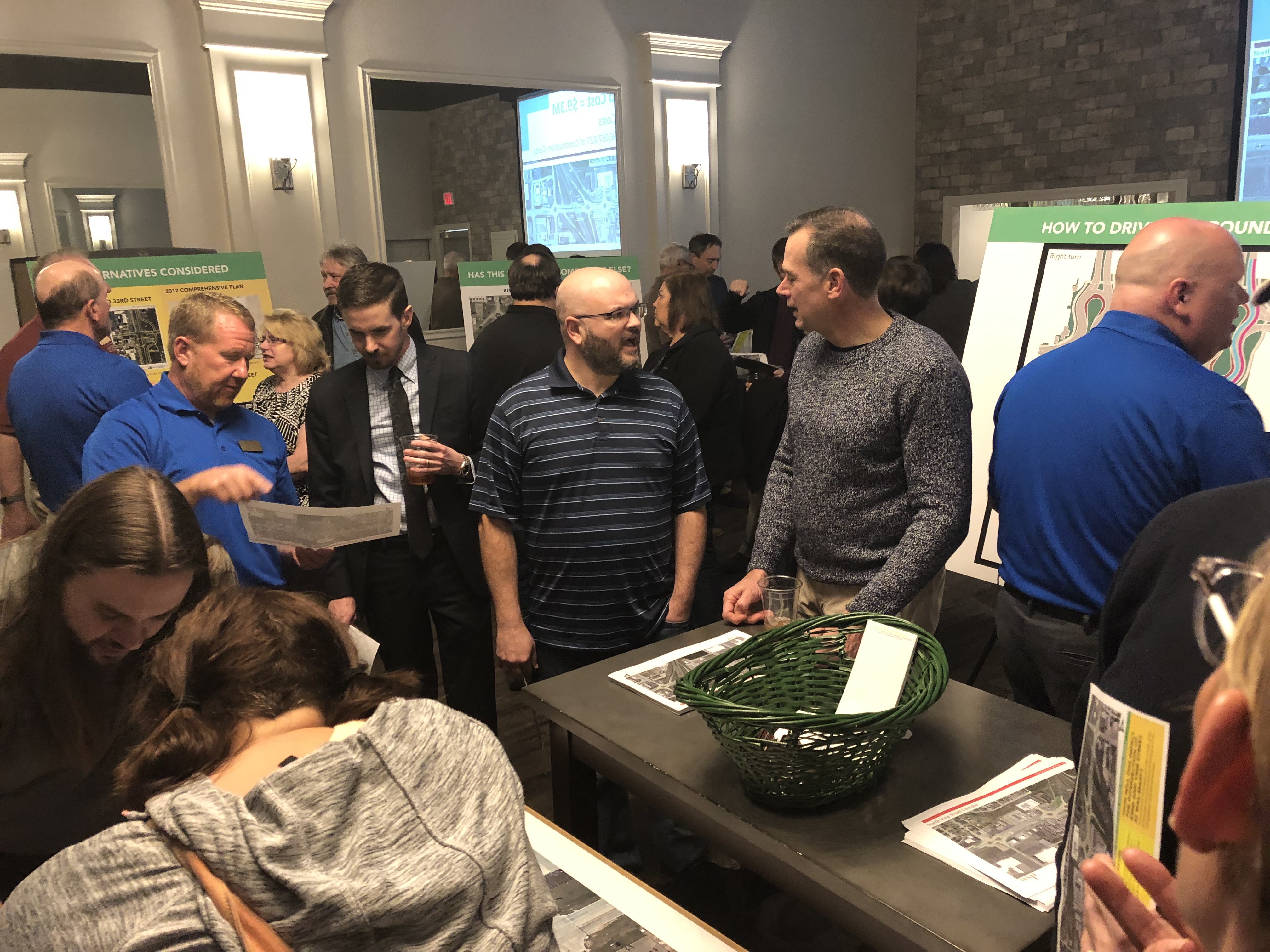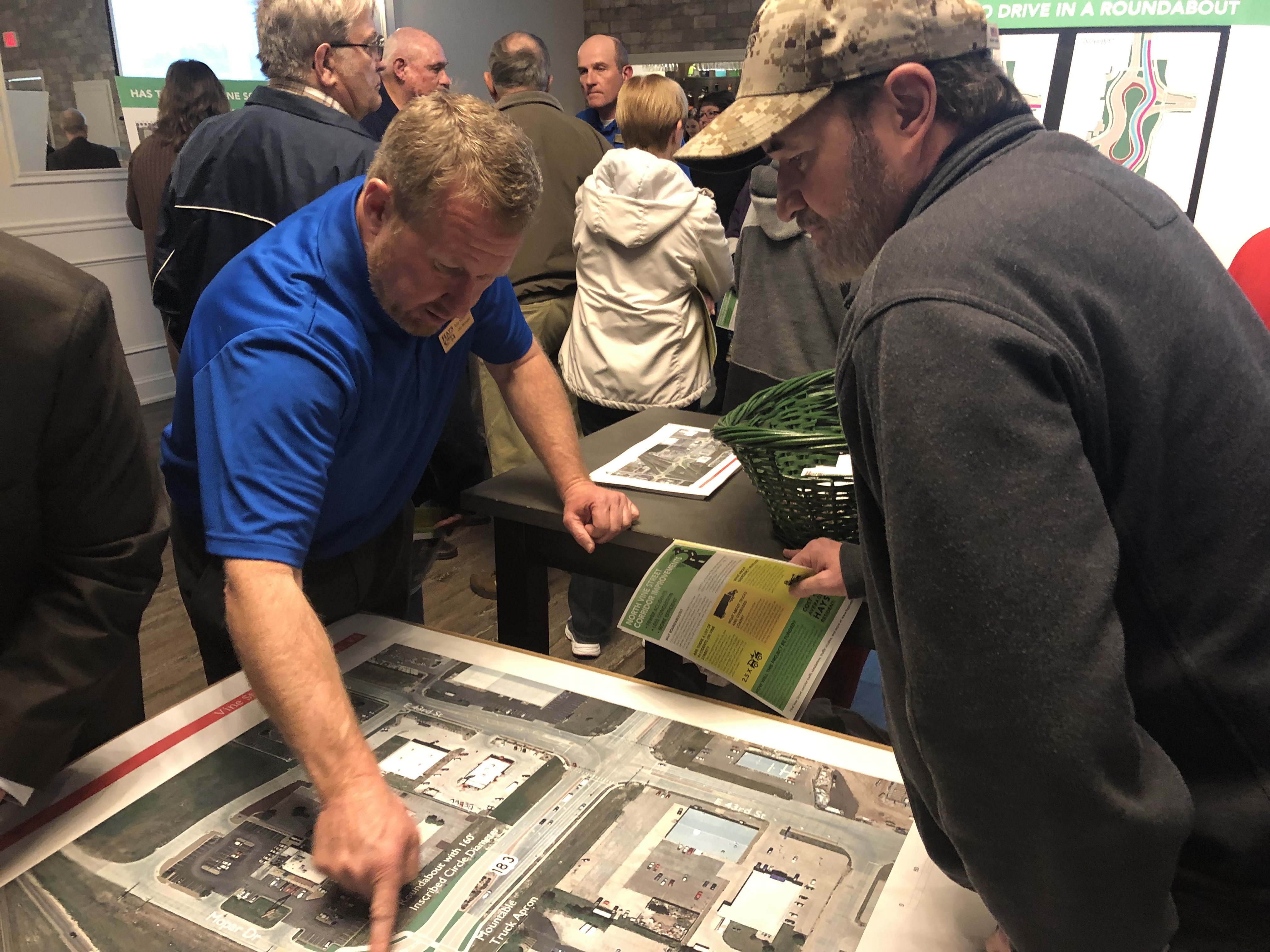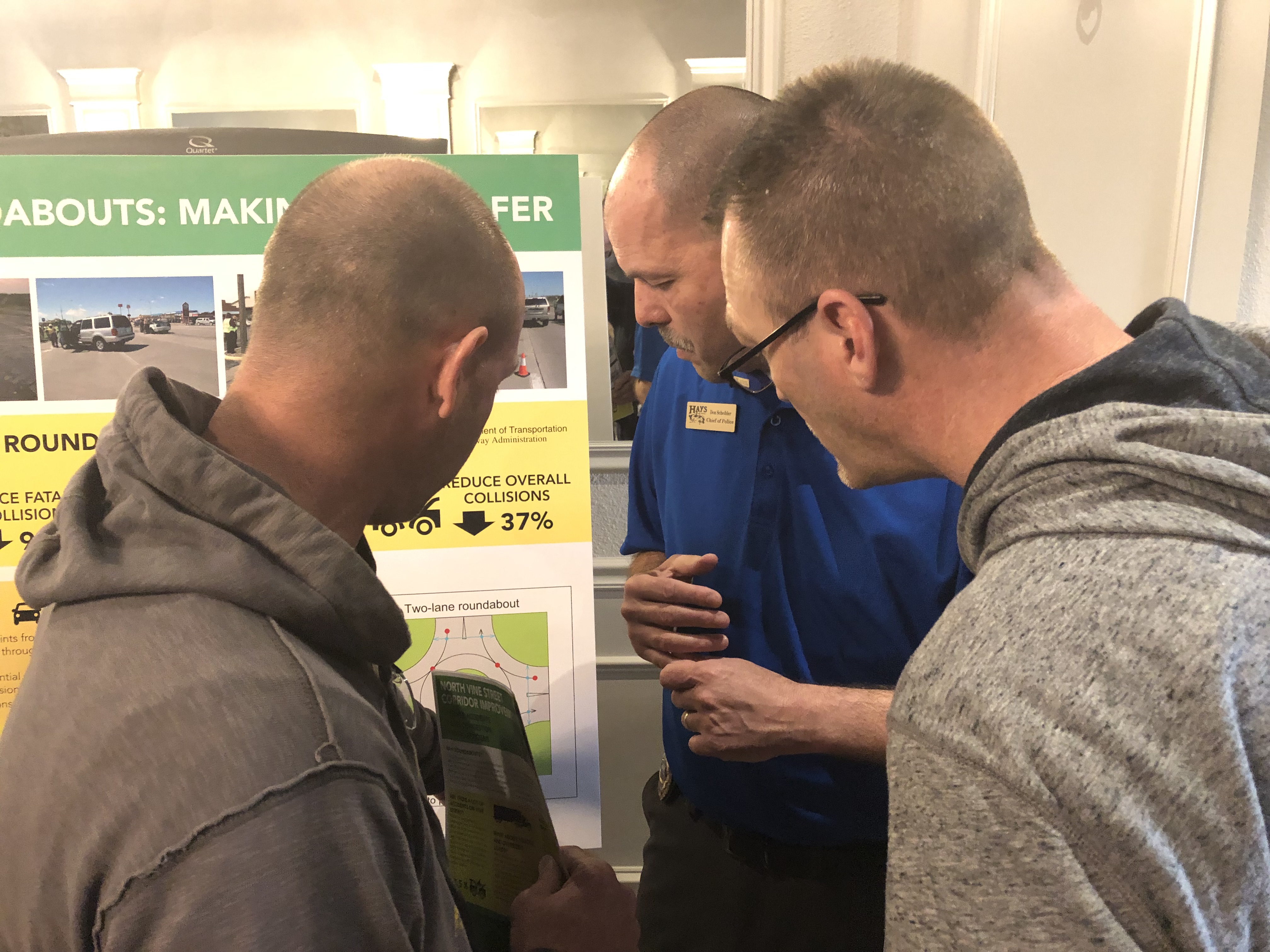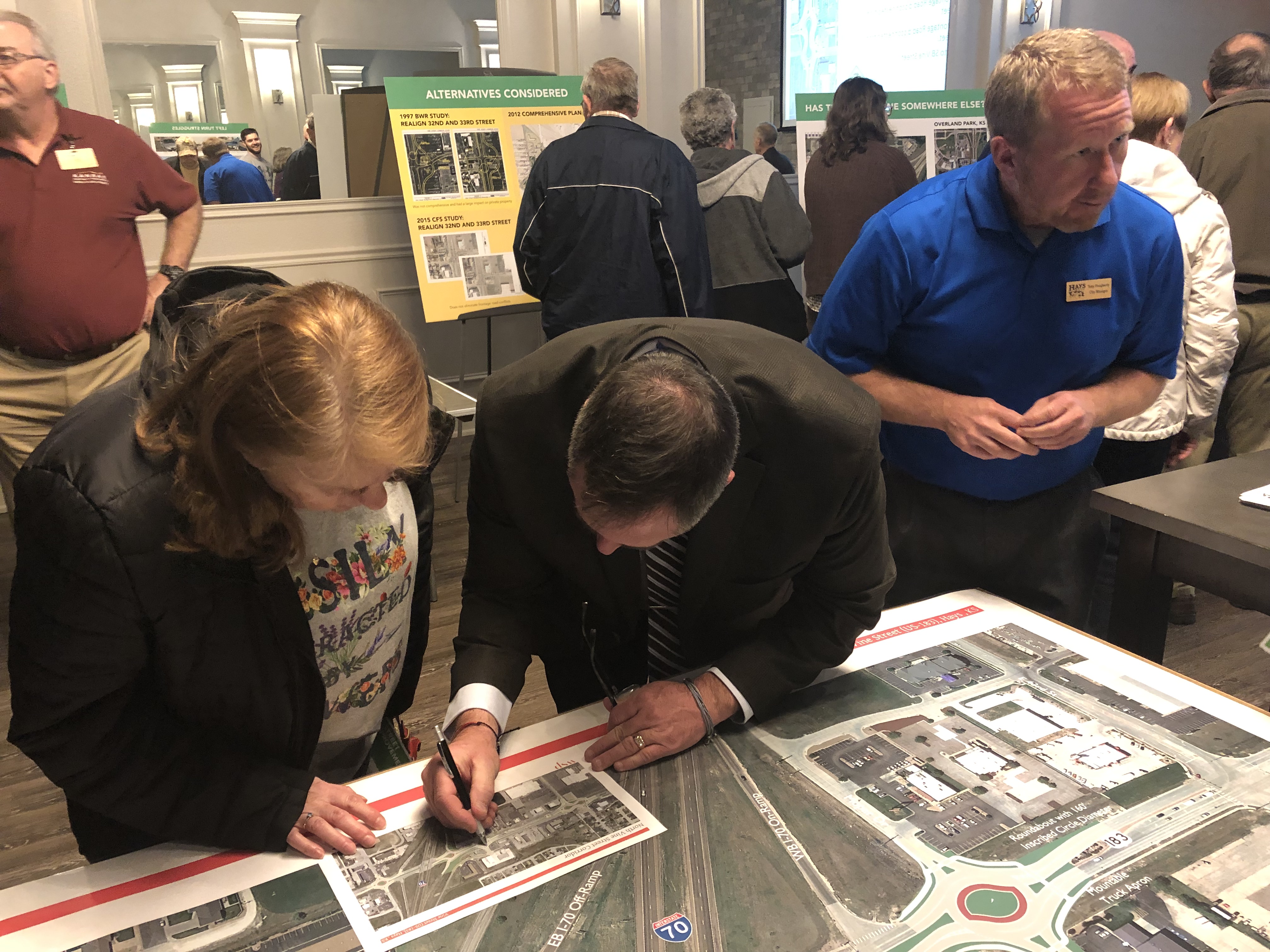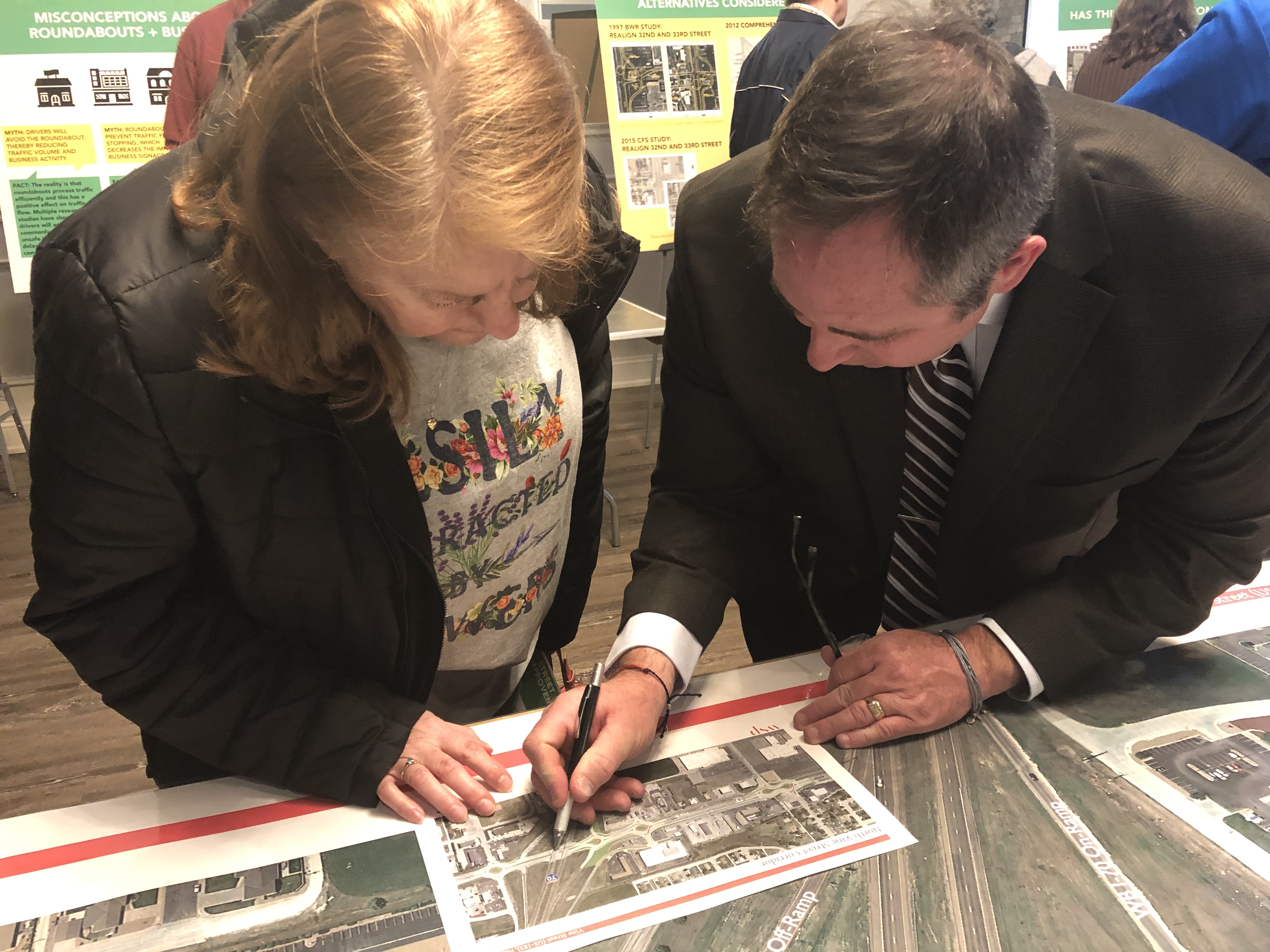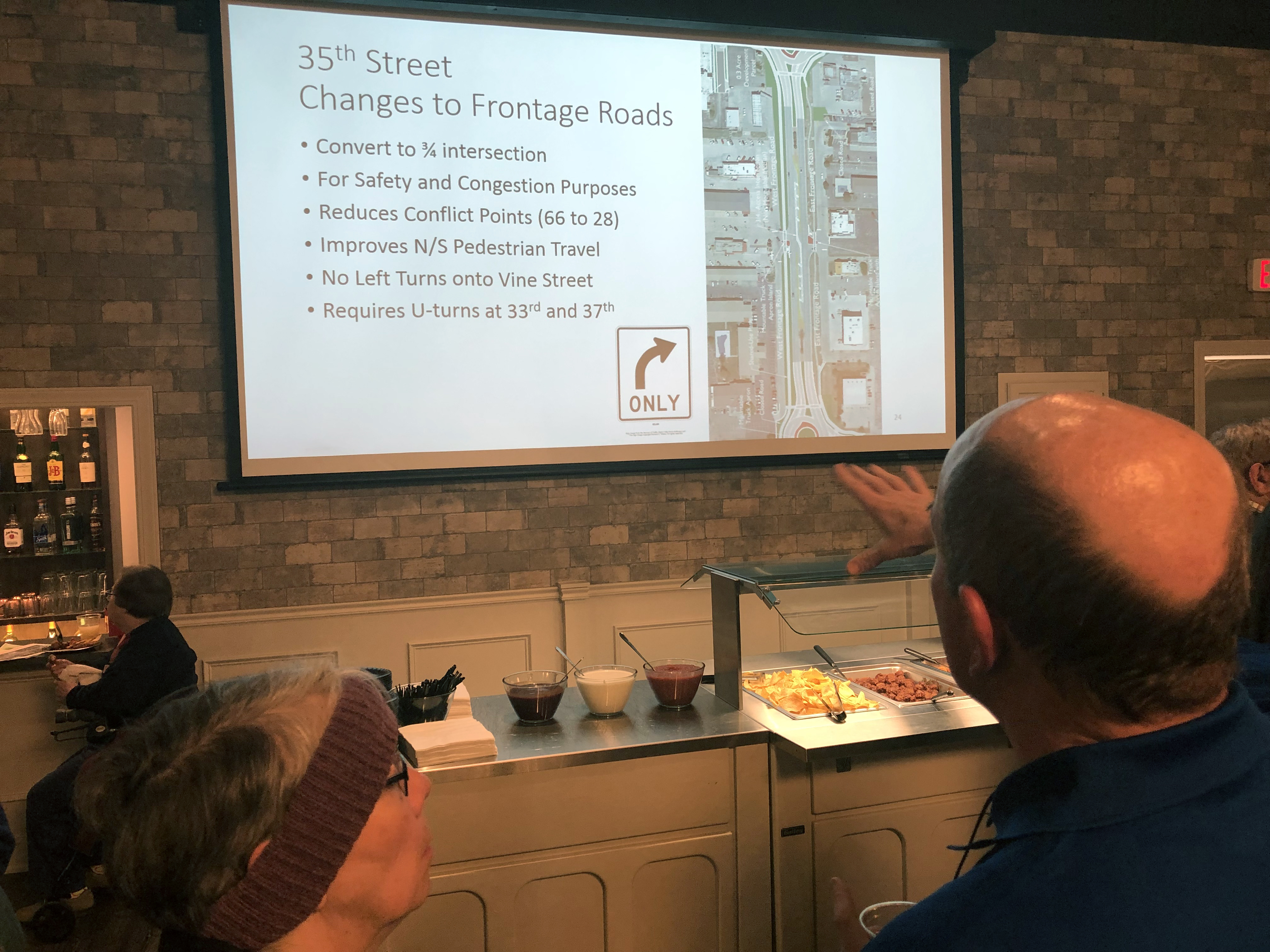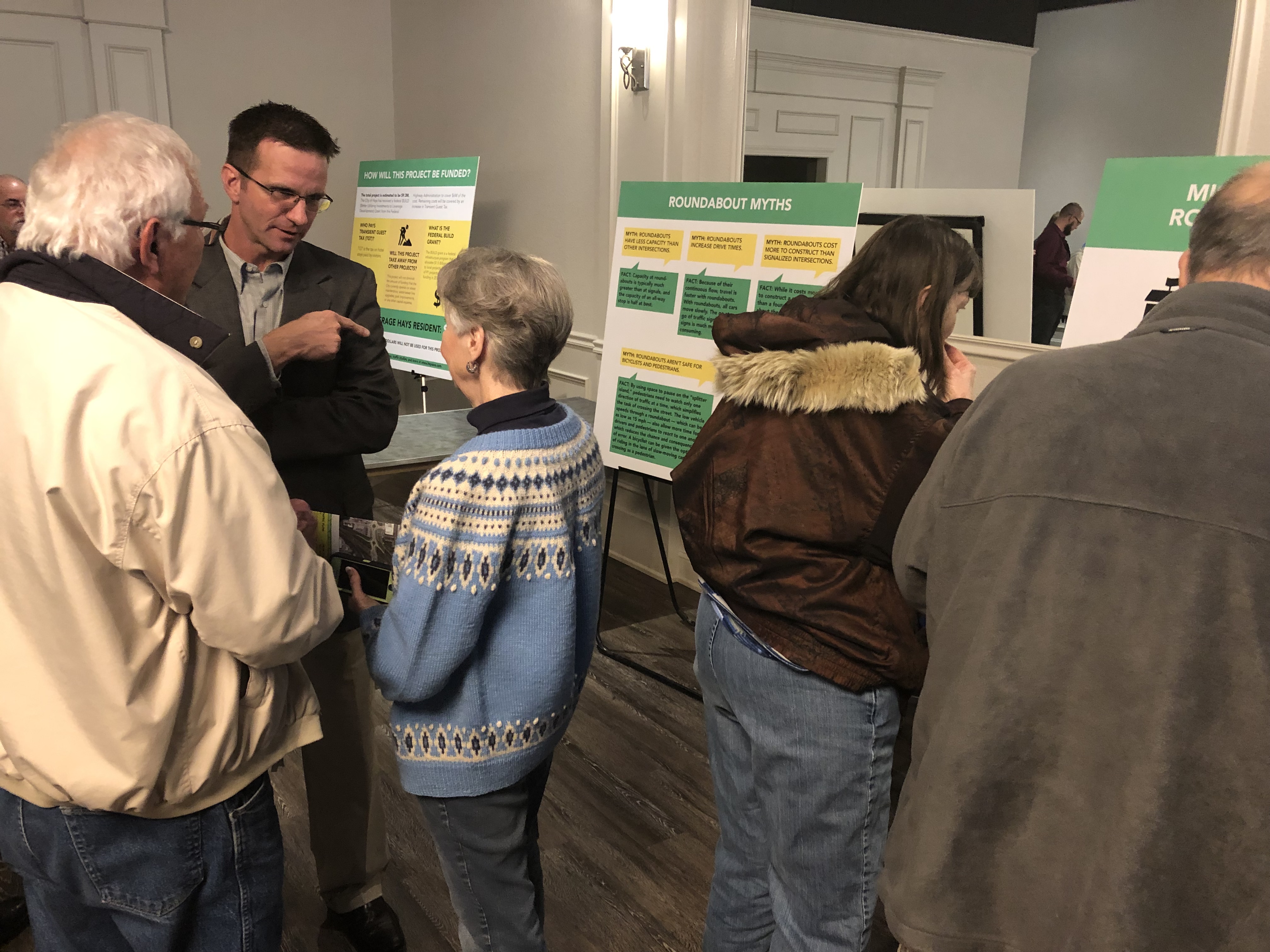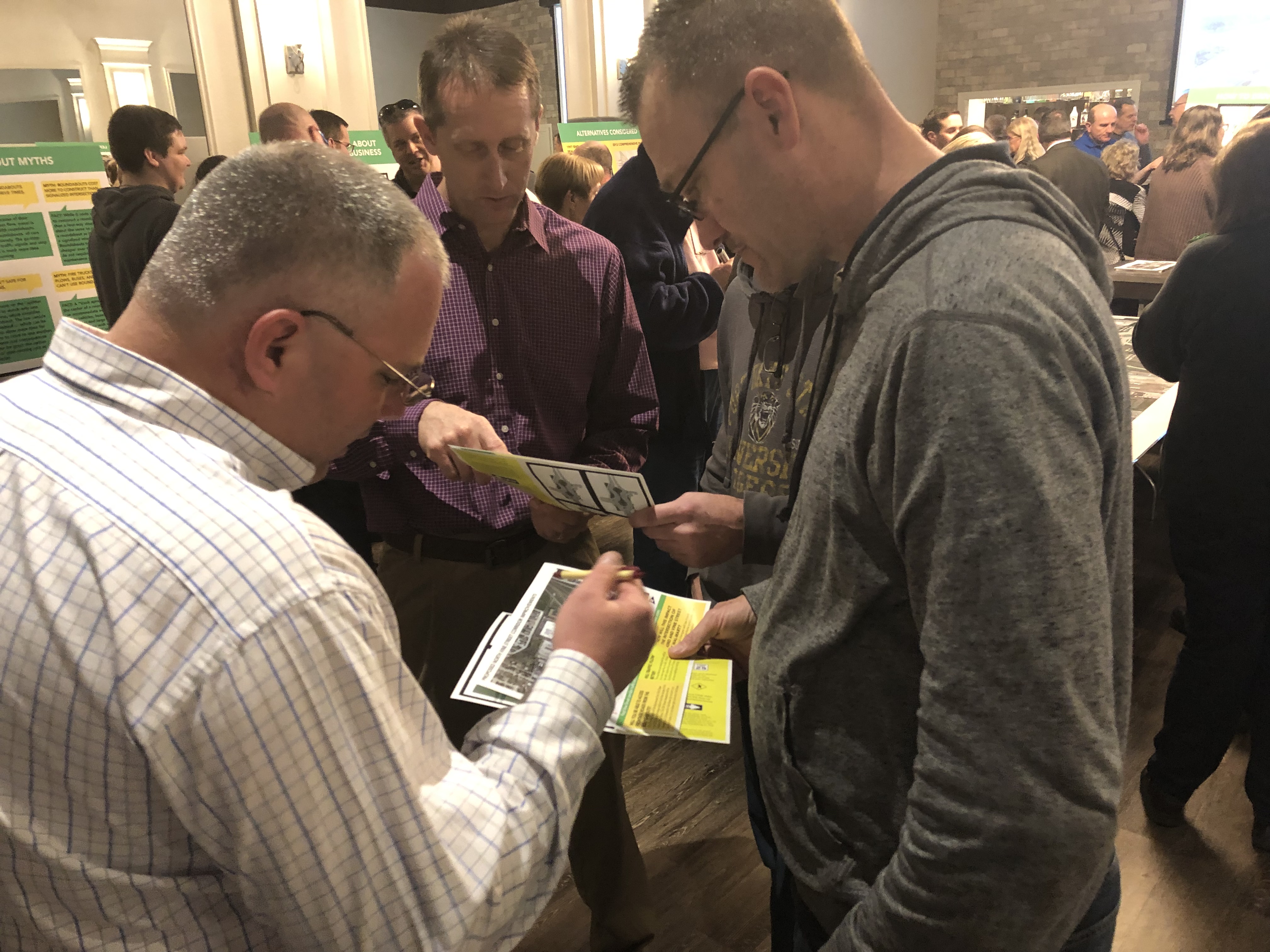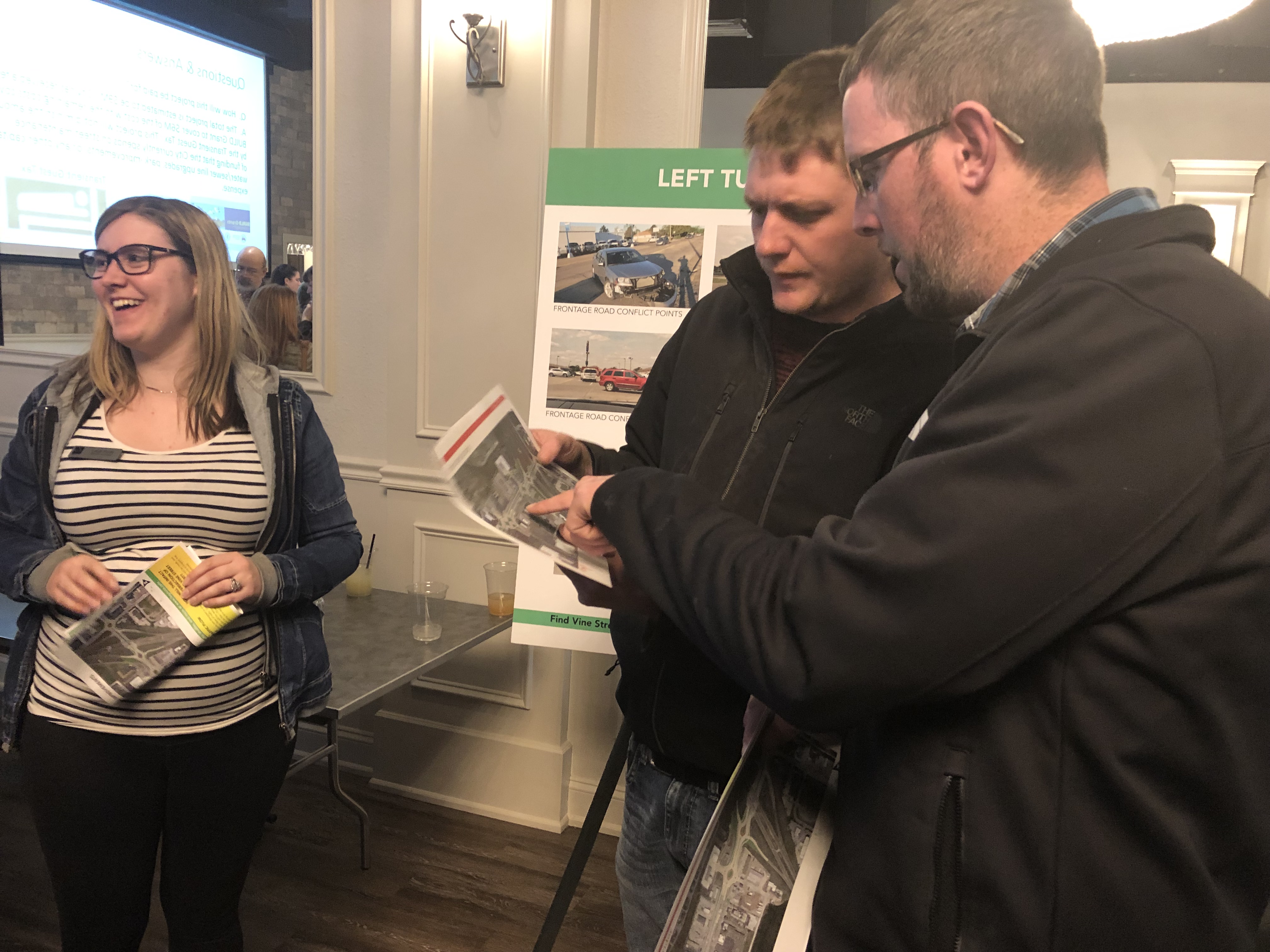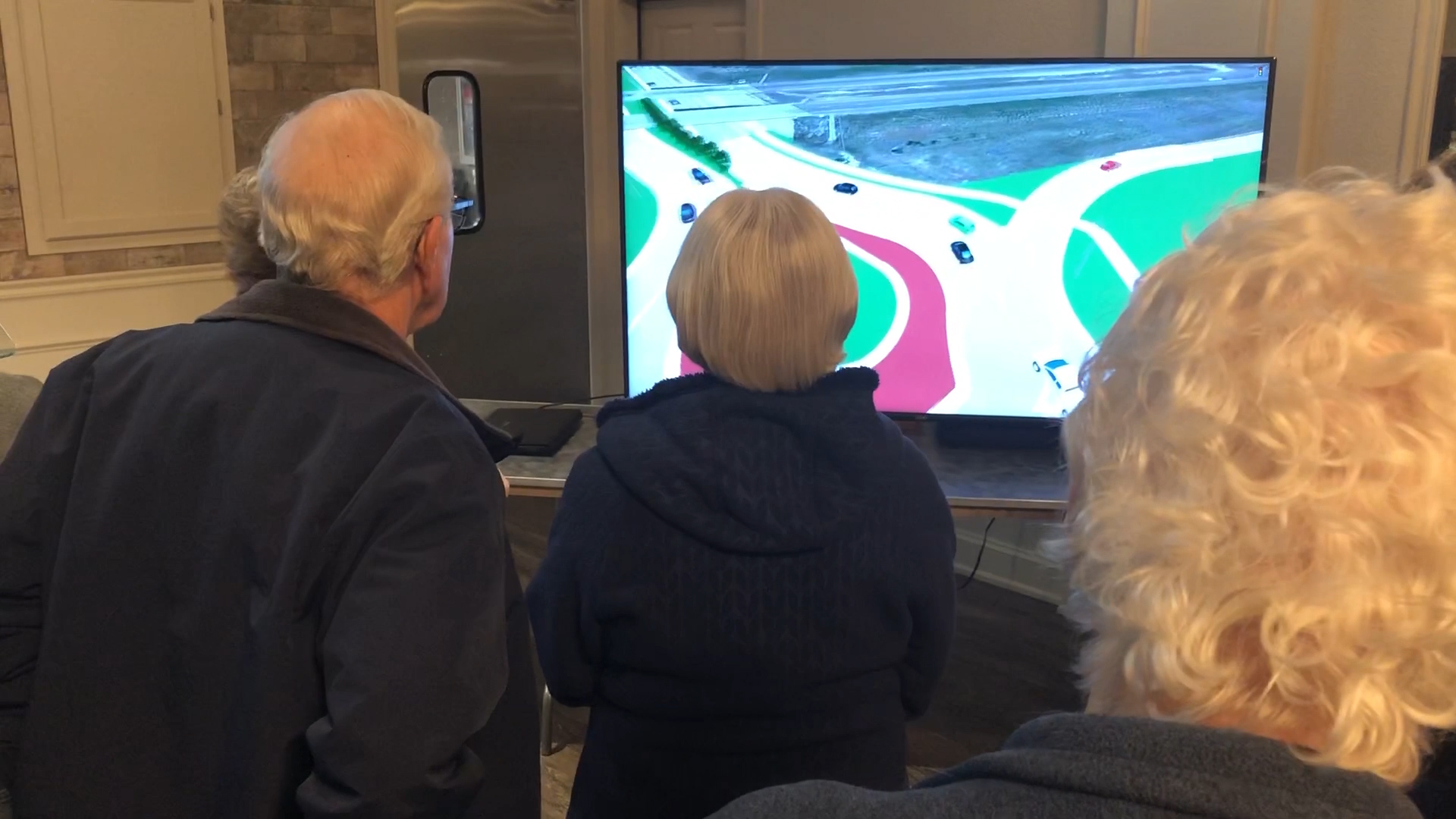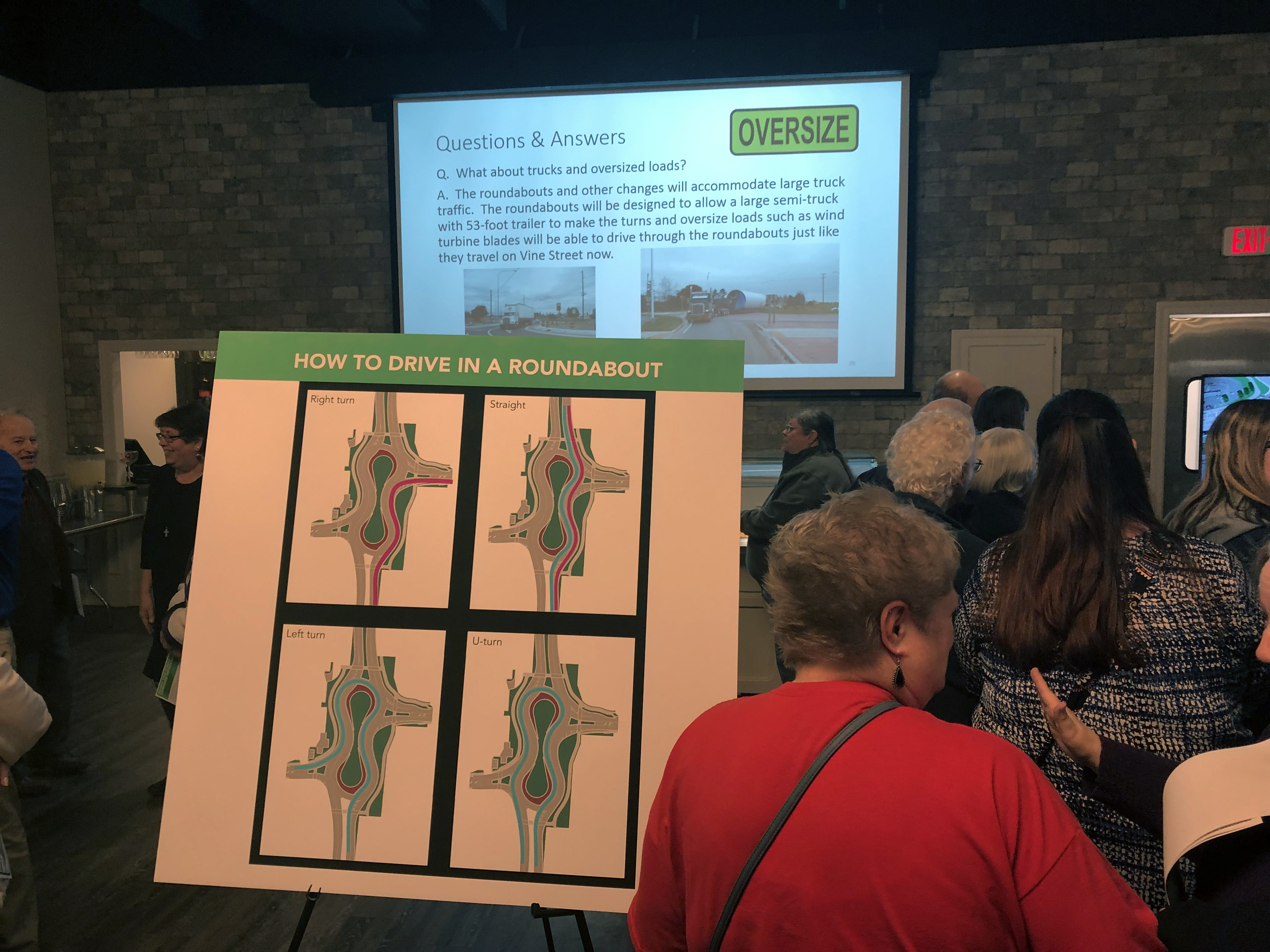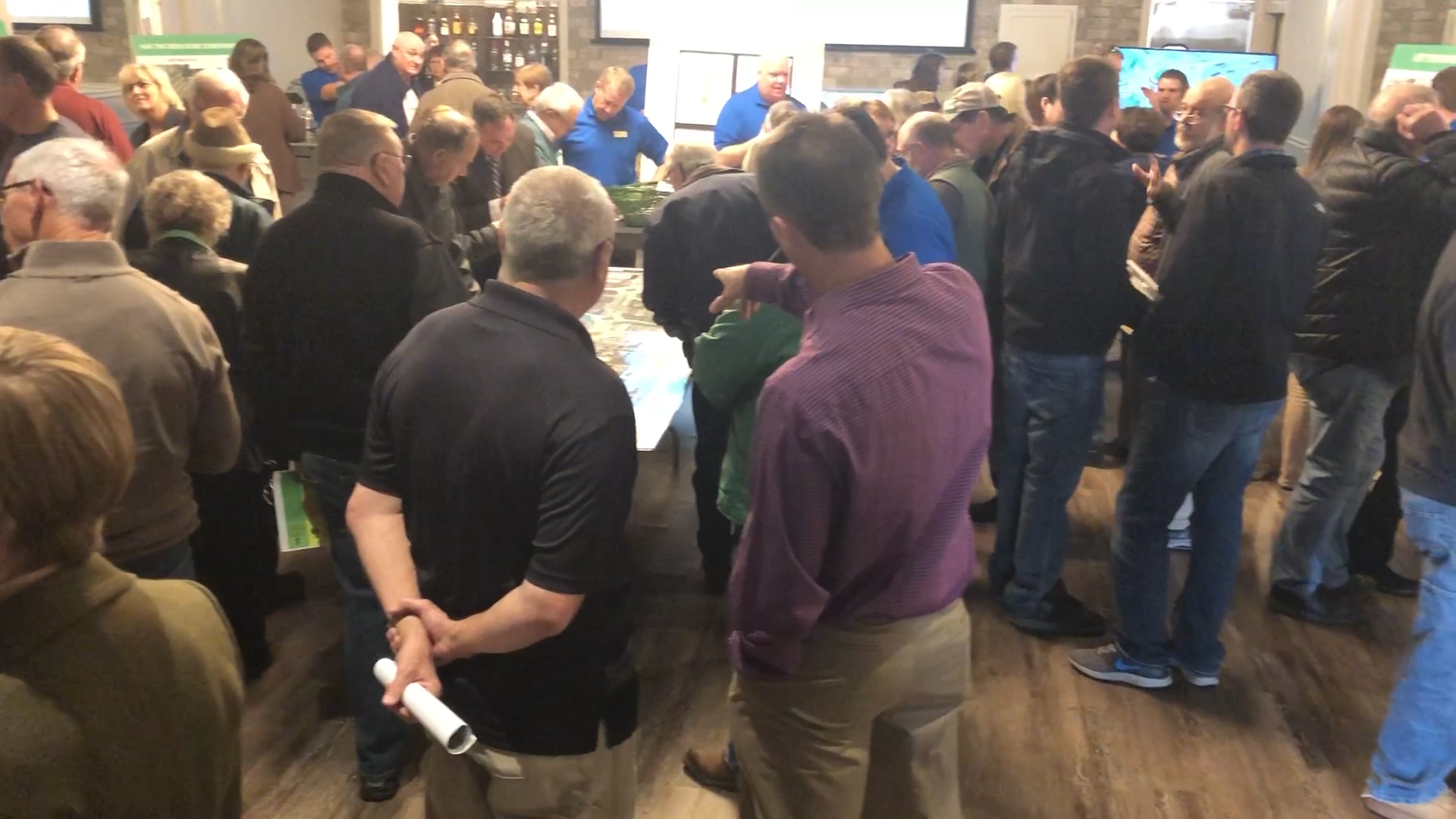
By BECKY KISER
Hays Post
Within the first 15 minutes, 80 people gathered Tuesday night for the city of Hays’ open house to see the design concept for four proposed traffic roundabouts on north Vine Street.
They were greeted — and counted — by Melissa Dixon, executive director of the Hays Convention and Visitors Bureau.
More than 200 people attended the two-hour event at The Venue in Thirsty’s Bar & Grill, where city staff, wearing bright blue polo shirts, were on hand along with project engineers from WSP and the Kansas Department of Transportation to answer questions from the public.
“I was hoping for a good turnout,” said James Meier, city commissioner, “but this is better than I expected.” Meier, who favors the roundabouts, said he hoped the information “alleviates some fears” residents might have.
Mayor Henry Schwaller said he talked to more people opposed to the project than in favor of it.
“This gives everyone a chance to see what the project will probably look like and how it works. This is a design. It’s not been approved,” he said.
Schwaller has said previously he is a “roundabout skeptic.”
He agreed the situation at 32nd and 33rd streets creates the most dangerous intersection in the city and “something has to be done.” Schwaller also sees a problem at 37th Street, where the former Ambassador Hotel was located.
“We can’t put a stoplight there. The Kansas Department of Transportation won’t allow us that,” he said.
The rest of the proposed project is too big to work, Schwaller said, “particularly for visitors coming from out of town. Getting through that gauntlet can be pretty daunting.”
Still, Schwaller concedes the city commission will “go for what the majority wants.”
RELATED: Hays Post conducted two polls, one on HaysPost.com and the other on Facebook, asking the public for their opinion of the proposed north Vine Street improvements.
The city is still waiting for final design on the project. Preliminary design is expected to be completed in March with a final design in November, according to John Braun, the city’s project manager. Bid opening would begin in April 2020 with construction planned to start in June 2020. The work is scheduled to be finished in November 2021.
The conversation was non-stop in the meeting room. Posters depicting often-asked questions and the answers were set up on easels around the room perimeter. One poster showed four previous design plans to improve safety which were all rejected.
An oversized map of the Vine Street traffic corridor design between 32nd and 41st streets was laid out on a table in the middle of the room. People crowded around it the entire evening, pointing to specific areas with their questions. Staff and engineers used dry erase markers on the map to illustrate their points.

A large-screen TV continuously played the simulated corridor traffic flow through the roundabouts at 32nd/33rd, 37th, 41st and the westbound Interstate 70 exit ramp.
The simulation, created by Jay Aber, senior traffic engineer at WSP Engineers, Lenexa, uses a four-year study of Hays traffic in the corridor.
Another video screen scrolled through questions and answers with graphics showing examples of the changes.
Marcie Pray lives in Victoria and works in downtown Hays. She’s driven through traffic roundabouts in bigger cities.
“I think it’s becoming an accepted thing although it’s very intimidating to us drivers who are little older,” Pray said with a laugh. “You gotta know which lane you’re getting into and how to get around to where you’re trying to get at.”
She described the open house as “overwhelming but informative.”

“But I think the best was the video. That was tremendous. First of all, I didn’t realize it was actually Hays video, and that really shone the light. And seeing the traffic flow was really helpful,” Pray said.
Aber answered several questions about how semis would get through a roundabout.
“U.S. 183 is a really important freight corridor. The highway is Vine Street itself. Obviously you have a lot of regular trucking. You also have a lot of oversize loads, including wind turbine towers and blades.
“One of the early requirements for this project was that two semi-trucks could drive side by side through the entire corridor,” said Aber.
“It’s also designed for the wind turbine blades specifically because they’re roughly the length of of two and half semi-trucks together. The wheels track really far outside of any kind of typical truck.
“So we also designed it so that a wind turbine blade on a 180-foot long truck can drive through the corridor without needing to stop traffic or to stop and use any special rear-wheel turning.”
Even though the proposed $9.3 million project would be funded by a $6 million federal grant and a dedicated 20-year 2 percent increase in the transient guest tax, 77-year-old Tom McClelland believes it’s “a waste of money.”
“I wish I was 35, 40 years younger. I’d buy a piece of property close and buy wrecker trucks because I think there’s gonna be a lot of them (wrecks),” the retired McClelland said. “All the people that are for this are telling me that’s not gonna happen, that there’ll be minor crashes. No T-bone wrecks but I can see a lot of side-swiping.”

Hays Police Chief Don Scheibler talked about roundabout safety to the crowd, using statistics from the U.S. Department of Transportation.
According to the Federal Highway Administration, roundabouts reduce fatality collisions by 90 percent and injury collisions by 75 percent. Overall collisions in a traffic roundabout are reduced by 37 percent.
The roundabouts would reduce the current number of vehicle conflict points from 32 to 8. Scheibler prefers to call them “contact points.”
“The current configuration really encourages aggressive driving through this area on Vine,” Scheibler said. “To make it through all the traffic lights, you have to speed.”
Scheibler also pointed out the driving speed in a roundabout is reduced. “Somebody may be going 40 miles an hour right now on Vine. That’ll be slowed down to about 25 miles an hour.”
The four-year traffic study of the Vine Street corridor from 32nd to 41st showed there were 124 vehicle accidents; 119 of those occurred in intersections.
With the elimination of traffic signals by the roundabouts at 32nd/33rd and the I-70 ramps, the potential of head-on and T-bone collisions typical in signaled intersections, are also eliminated. Vehicle crashes are more likely to be side-swipes at much lower speeds, Scheibler explained.
The project design is also safer for pedestrians, reducing conflict points from 24 to 8.
Existing frontage roads would be disconnected from 32nd and 37th. Frontage roads will only have access to Vine at 35th, which will be changed to a 3/4 intersection. That would allow right and left turns from Vine but only right turns onto Vine.
Attendees were given handouts and copies of the poster boards to take home for further study.
Pray is somewhat sure the roundabouts would be a positive addition to Hays. “I think it is. It’s just going to take a learning curve to accept it.”
The traffic simulation video and copies of the poster handouts are available on the city’s website www.haysusa.com.
